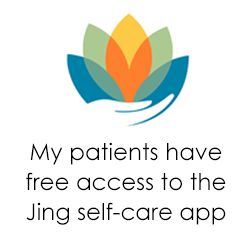
Services & Rates
Intake/Traditional Diagnosis
In Five Element acupuncture, a traditional diagnosis is a comprehensive and holistic assessment of an individual's unique energetic constitution. It includes a detailed health history, pulse and tongue diagnosis, and a physical and structural exam. The goal of the traditional diagnosis is to identify the patient's elemental constitution (core nature) and address the root imbalance in one of the five elements: Wood, Fire, Earth, Metal, and Water. Treatment is then focused on restoring harmony to that specific element, which is believed to have a profound and lasting effect on the person's physical, mental, and spiritual well-being.
Acupuncture
According to Traditional Chinese Medicine, your overall health is determined by the quality of the Qi (energy) flow through the natural pathways of your body (meridians). Acupuncture uses a variety of techniques, including placing very thin sterile needles into specific points on the body, to stimulate and improve your Qi flow.
Treatment in Five Element Acupuncture is highly individualized and often involves using fewer needles per treatment (typically four to six points) to correct the flow of Qi and restore balance to the constitutional element. Five Element Acupuncture treatment also typically includes use of moxibustion on specific points or regions of the body along with needling or acupressure.
Moxibustion
Moxibustion is a Traditional Chinese Medicine technique that involves the burning of mugwort, a small, spongy herb, to facilitate healing and health. Moxibustion has been used for healing purposes throughout Asia for thousands of years. The purpose of moxibustion, as with most forms of Traditional Chinese Medicine, is to strengthen the blood, stimulate the flow of Qi (energy), and enhance your overall vitality and health.
Moxibustion on specific acupuncture points is typically incorporated into an acupuncture treatment depending on the patient's constitution or may be used as a standalone treatment. Standalone treatments may involve moxibustion used directly on acupuncture points or indirectly over broader areas of the body using a variety of techniques.
Auricular/Ear Group Acupuncture
Auricular acupuncture is a form of acupuncture that is based on the idea that the outer ear is a "microsystem" or a miniature map of the entire body. The practice involves stimulating specific points on the outer ear with needles, ear seeds, or acupressure to address health issues in other parts of the body.
The group sessions will focus on the National Acupuncture Detoxification Association (NADA) protocol, which uses a specific set of five points on the ear, to help manage withdrawal symptoms and cravings, mental health disorders, emotional trauma, and general relaxation. Other points may be included as needed.
Acupressure
Acupressure is based on one the most ancient principles of healing — that simply touching a specific point on the body will release stress and improve health in the body. In an acupressure session, I apply firm pressure with my fingers or with tuning forks directly to these "points" on your body, which relieves your muscle tension and improves your circulation. This simple and powerful technique has been shown to very effective in treating headaches, backaches, and even insomnia.
Cupping
Cupping has been a part of Chinese Medicine for over 2,500 years. It relieves aches and pains, improves circulation, and also helps with respiratory and digestive issues. I simply place a specialized "cup" onto specific points on your body, and then use suction to draw your skin up into the cups. It doesn't hurt — it simply draws fresh blood to that area of your body, which facilitates the cleansing and strengthening of your Qi (energy). The end result is a greater overall sense of health and well-being.
Gua Sha
Although Gua Sha is an ancient healing technique used by Chinese Medicine practitioners for thousands of years, it is relatively unknown in the West. It is recognized throughout Asia as a highly effective treatment for chronic pain conditions, stress, fatigue, and a host of other ailments.
First, Gua Sha oil is applied to a specific meridian (energy pathway) on your body. I then use a smooth round-edged object (such as a spoon) to apply short brisk strokes to that area. This creates red patches of skin (called "Sha"); detoxifying your blood and restoring the healthy flow if Qi (energy) to the area. The Sha will fade in 2 to 3 days, but the sense of health and vitality you experience from it will last much longer.
Lifestyle and Nutrition Coaching

I believe it’s important to help my patients make lasting improvements to their health, and this often means taking action outside as well as inside the treatment room. Chinese medicine offers a comprehensive approach to health and wellbeing, including an array of self-care practices, and I can help you utilise these. There is no extra cost to you - this is a free added benefit for my patients.
I use the Jing app in my practice as a convenient way to prescribe self-care programs in the form of videos, audio recordings, articles and recipe cards. I can put together a plan for you based on my diagnosis and understanding of your condition, which might include acupressure points, self-massage routines, qigong exercises, guided meditations, dietary advice and recipes. For patients who are open to integrating these simple techniques and principles into their lives, results can be faster and longer-lasting.